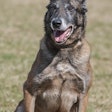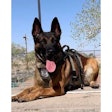A violent family fight has erupted in a residence. The wife has filed for divorce and for sole custody of the couple's 8-year-old daughter. The husband is distraught and, in a fit of rage, stabs his wife. She managed to call 911 and the response unit includes SWAT and hostage units. The husband is holding his daughter hostage and demands that he get to leave with her.
The husband grows increasingly despondent and says he is going to kill his daughter and himself. To keep SWAT officers from entering he sets his home on fire and retreats to a back bedroom. The only way to rescue the young girl is to make an entry. Is your team prepared to deal with the hazards of fire and smoke?
Have You Considered the Risks?
While most tactical teams spend countless hours training on movement, tactics and firearms proficiency, they spend little time dealing with the dangers of fire and explosives. What preparations has your team made for moving in a smoke environment? Have you considered what uniform and equipment you are wearing and how those items would react if exposed to high levels of heat? Have you considered the explosive power of natural gas when a suspect turns on a stove and fills a residence with gas? Have you looked closely at the type of munitions you are using and considered that you may accidentally initiate a fire with your delivery of those devices?
The Tucson, Ariz., SWAT team had a series of incidents that caused them to seriously reflect on their readiness for situations involving fire, smoke and explosions. Several times on search warrants, distraction devices have started fires because of where they were dropped.
CS gas deployments resulted in fires, including one case in which a 37mm device fell into tall grass after bouncing off a window frame, burning down two abandoned houses at a training location. At another house, in trying to subdue a suicidal person, an officer used a stingball grenade that rolled into a closet, set clothing on fire and caused the house to burn down.
In another incident, a suspect taped his windows shut, turned on the gas from the stove and "flicked his Bic" lighter as he shot himself in the head. His intent was to blow up the SWAT team outside his third floor apartment. Fortunately for the SWAT team, the concentration of gas was not right for an explosive mixture.
Following these incidents Tucson made changes in its training and deployment for SWAT. A complete review showed the need to reevaluate the effectiveness and safety of the SWAT deployment uniform and munitions selection. This reassessment led to specialized training with the local gas company and the Tucson Fire Department.
Reassess Your Fire Preparedness
When determining a standard uniform for SWAT teams, you need to look for protection from not only the dangers of edged weapons and bullets, but also from fire and smoke hazards. Review your own uniform from head to foot. There are trade-offs for speed, ease of motion, visibility and ballistic protection, but they all come at a price. You must consider all aspects of hazards you are likely to face, then select the best balance for your particular agency and mission.
Kevlar helmets protect the head from a variety of bullets and falling objects, although they are uncomfortable. Eye protection is essential, but know the flash point of the material so you are not wearing something that can melt into your face when exposed to extreme heat. Balaclavas are considered to be non- "media friendly" by some, but they can protect the face from burns and close detonations of distraction devices.
The uniform itself should be reviewed for the protection it offers in a fire environment. Some materials, such as nylon, will melt. If you wear a long sleeve shirt, roll the sleeves down. Your exposed skin can not only be burned, but also can be scraped and scratched. Nomex gloves should also be considered for maximum fire protection. If your unit mandates wearing these gloves then they should be standard uniform for all firearms training also. Finally, you should use the same considerations to make sure officers wear the proper protective footwear to withstand fire.[PAGEBREAK]
Your department should review all munitions to ensure that your own munitions don't become the problem. Some models of distraction devices are far more flammable than others. Many CS gas deployment devices - whether launched from a 37mm gun or thrown like a baseball - are burning-type devices and have a strong likelihood of causing a fire. One of the best methods of deploying CS gas quickly and effectively is to place the grenades in a metal ammo can that is vented. The cans can be thrown through two opposite corners of a residence and provide a rapid and thorough deployment of the gas, without causing a fire. A CS gas deployment device can also be introduced through ventilation systems, air conditioning or coolers. Demonstration and approval from your jurisdiction's risk manager and fire department can help reduce liability concerns. The ideal situation is to have a varied supply of "tools of the trade" and to know how to deploy them safely without starting a fire.
Any intelligence-gathering mission of a target location must include a determination of hazardous materials present. The most likely may be natural or propane gas used for heating. Everyone on the team needs to know the proper methods of shutting off the gas before it gets into the structure. Your local gas company can provide this training, as well as general information on the dangers of gas. Our training taught that the most explosive mixture of air and gas is actually at the level of about 14%. The proper tactical step if it is known that a suspect is trying to fill a structure with gas, is to vent it immediately. Venting a structure from a distance can be accomplished by using projectiles from a 37mm gun through the windows.
The biggest danger to a SWAT officer isn't fire, but smoke. Standard gas masks do not filter out smoke. Dense smoke will very quickly overcome a person and cause severe disorientation and breathing difficulty. SWAT officers should be trained by firefighters in movement techniques in a smoke environment. Officers will be taught how to drop to the floor where there may be breathable air and how to move along the walls in order to find an exit. Very few fire departments allow firefighters to enter a building to locate SWAT officers unless the tactical situation is under control. That means that, most likely, you are on your own. Consideration should include instruction and availability of self-contained breathing devices for SWAT officers. Companies are now making these devices especially for SWAT teams and marketing them for wear when doing warrants for meth labs. Teams should also consider having at least one officer wear a breathing device on any deployment so they can provide emergency rescue capability for their fellow team members.
Work Together
The Tucson Police Department formed a close working relationship with the Tucson Fire Department more than 10 years ago. The Fire Department allowed Fire Captain Patrick Bunker to provide specialized training for the SWAT Team. Captain Bunker introduced basic fire fighting training in how to properly use fire extinguishers to put out small fires. He provided a lecture on basic tips for dealing with fires. Captain Bunker also set up training in movement skills through a smoky environment. All SWAT officers are put into a smoke house and have to learn to maneuver through it. The exercise culminates in the rescue of mannequins in the smoke environment.
Within one month of the first training of this type, an entry team found itself inside a residence where they were trying to take an armed suspect into custody. The suspect fired upon the officers and set the residence on fire before retreating to a back bedroom. The entry team had to save itself and get out of the residence, which became fully engulfed. The officers credited their recent fire training with helping them maintain their calm and search for a way out. The suspect never gave up and burned to death in his own residence.
The Tucson PD's partnership with the Fire Department has only flourished. About 10 years ago they began a practice of having a supervisory fire official respond to every major callout situation. This official is able to monitor the situation and bring the appropriate fire equipment to the scene. They also send in their recovery vehicle, which is a haven for exhausted SWAT officers, who can be monitored and rehydrated by paramedics.
As your tactical teams continue to evolve, you need training for every eventuality. Learn from both the mistakes and innovations of others. Training to prevent the hazards of fire will instill even greater confidence in your officers.
Kevin Danaher is a Patrol Commander with the Tucson Police Department where he has served for 21 years. The graduate of the U.S. Military Academy at West Point is a former Army Major and SWAT Commander.
















